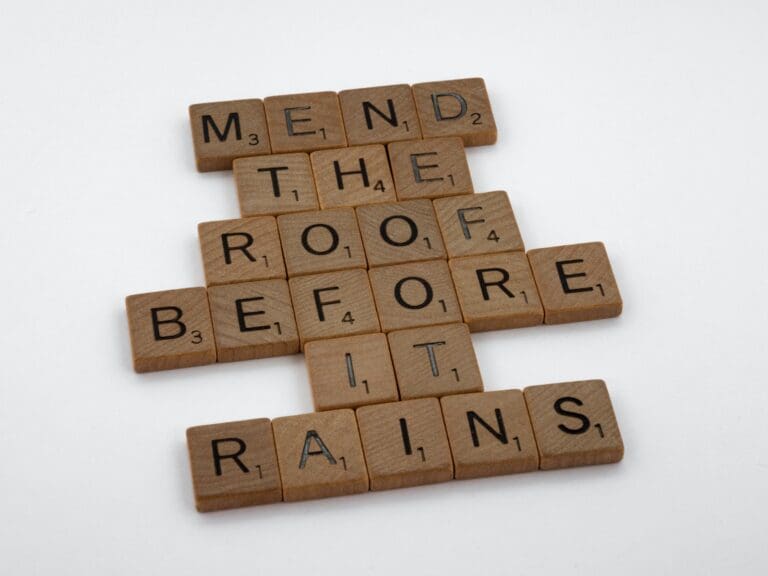
Let’s talk about maintenance spanking, a topic which has been popping up in my inbox recently. I’ve been asked about all sorts of things, from setting protocol to its relation with punishment, how to set the right level of intensity, and believe it or not, even whether consent is necessary for maintenance spanking (spoiler: that’s an emphatic yes).
So, as per usual, I’ve decided to lay all my thoughts and answers out in one place for easy reference, including some (as ever) pragmatic tips for adding maintenance spanking to your dynamic.
So, what is maintenance spanking?
Maintenance spanking is a bit more than it says on the tin. It’s essentially a form of ritualised impact play to help a submissive adhere to the rules and head off the need for punishment.
The ‘maintenance’ part is really the important bit – the ‘spanking’ you can take or leave. Although I will use the term ‘maintenance spanking’ throughout this article, feel free to substitute your implement of choice. Personally, I am usually more partial to a cane, but your choice of tool is entirely up to you.
So, why consider adding maintenance spanking to your dynamic?
Maintenance spankings can help circumvent the need for punishment and prevent misbehaviour through fulfilling underlying needs. Obviously, if discipline is a part of your dynamic, it won’t eliminate the need for punishment entirely, but it can help reduce it. Proponents of domestic discipline even use these maintenance to punishment ratio calculators to keep track of the relationship between the two.
It’s important however that you don’t just assume that more maintenance spanking = better behaviour. Rather, it’s important to understand what is causing the misbehaviour and whether maintenance spanking would help address that cause. Here are some common needs that maintenance spanking can help fulfill:
The need to feel the dynamic / dominant’s authority
This is probably one of the most common reasons that rules get pushed. Sometimes, subs just need to feel the dynamic is more than just theoretical. That if they break the rules, there will be consequences. That their dominant actually cares about the rules they have set.
Maintenance spankings can be a good way to fulfil this need before a rule is broken to satisfy it and thus circumvent the need for punishment.
Keeping focused on new habits
Habits are the parts of our behaviour which are programmed on ‘autopilot’ – things we are so used to doing, we do them automatically. Consequently, they can be tricky to change. Often where a rule in the dynamic is targeted at changing a sub’s habit, it can be tricky for a sub to stick to. New habits take about 60 or so days of consistent practice to stick and if life gets hectic in the meantime, it’s easy to revert to form.
While corporal punishment is unlikely to help in changing habits by way of classical conditioning, it can help connect with their motivation for change and the fact they do have their dominant to keep them accountable.
Masochism
In my experience, most masochists have a need to be hurt, whether emotionally / psychologically or physically. If that need goes unsatisfied, their determined, energetic masochist brains will concoct some (usually convoluted) way to satisfy that need. For submissive masochists in power dynamics, this can mean getting a bit sullen or argumentative or failing to follow a rule or two.
Masochism vs bratting
This need is often unconscious – it’s not a deliberate attempt to get a particular outcome, but rather caused by a general bad mood, linked to an underlying unmet need. This is a separate issue from bratting, where a sub is entirely aware of what they are doing and are doing so entirely on purpose.
Figuring out whether this applies to your dynamic is a process. It may be that you’re dealing with some mix of both – honestly, it’s difficult to quantify to what extent we’re aware of the pull of an emotional need. It’s just worth noting that there are some other possibilities than ‘they’re doing it on purpose’ when you come to have that conversation.
Meeting masochistic needs when things get busy
Regular impact play can also help here, but that can fall by the wayside when life gets busy. The masochistic need, however, does not go away when things get busy (unless the busy-ness offers a suitable way of being miserable – I do know a masochist or two who get their fix through workaholism, naming no names, but you know who you are, guys). So, maintenance spanking can offer a consistent and clear way of meeting that need.
It is also worth noting that masochists might actually be more fulfilled through pain play they ‘have’ to endure, rather than something which is explicitly designed to be fun. I will go through the pros and cons of having a designated time set aside, but the mundanity of ‘I have to walk the dogs, take out the trash, endure the spanking’ can actually be helpful to some masochistically inclined subs.
Maintaining the connection to the dynamic
Sometimes, rules just don’t get prioritised because the dynamic is not at the forefront of people’s minds. It can slip somewhere behind the general hustle and bustle of life. Maintenance spanking can offer a good way for both sides to connect with the headspace, each other, and the dynamic.
How to introduce maintenance spanking to your D/s dynamic
So, if you are considering adding maintenance spanking, I would recommend starting by consider why the misbehaviour is happening. Is it a need for tangible authority, old habits rearing their heads, some other emotional need? The list above isn’t exhaustive, but it can offer a good starting point in figuring out what’s going on.
The general idea is to identify and satisfy the underlying need behind the behaviour you’re trying to address through maintenance spanking.
I have covered the topic of communicating about and assessing underlying needs in more detail in Section 2 of my comprehensive guide to punishment, so do have a look over there if you’re interested in that.
Once you have figured out what you want to achieve, think about the following:
- Frequency
- Regularity
- Protocol
- Intensity
- Implement
Frequency of maintenance spanking
The most common arrangement I have come across is a once a week session, but think about what works best for you. Spanking daily might sound great to you, but it might be that it’s just not practically possible to make that commitment.
I would recommend starting off with an achievable goal and then increasing it, rather than starting ambitiously and risking getting discouraged when life gets in the way. It’s fine if you start off once a month as long as you stick to it!
Regularity of maintenance spanking
Have a chat about how regular you would like to make your maintenance spanking. Does every Thursday at 7pm sound organised, or does it sound like an unpleasant chore? If you’re in the first camp, make it easy to remember while you’re setting into your new routine. Whether you’re a spanker or a spankee, it might feel silly to set a reminder or an alarm, but the brain capacity you’re not using on remembering when to spank you can use to focus on your dynamic instead.
If you’re in the second camp and that kind of routine sounds like hellish drudgery, consider linking the maintenance spanking to another event. Say, every time you get groceries delivered, or when the temperature goes outside of this year’s average, it’s a spanking day. Pick something you pay attention to, which happens semi-randomly at about the right frequency, hey presto, your spanking days are spontaneous but still somewhat planned in.
You can of course leave it down to your discretion. Do keep in mind though that protocol can make maintaining a D/s dynamic much easier – it does the work for you when your brain isn’t keen on planning. Which is why I so strongly advocate for it – having some kind of structure in place has really helped keep my dynamic grounded when perhaps other things in life are not.
Intensity of maintenance spanking
While logic might dictate that a maintenance spanking should be moderate, to distinguish it from punishment, it really depends on what you’re trying to achieve. For example, if you’re looking to satisfy masochistic needs, going easy might not do it for you. It’s worth remembering that the unpleasant part of punishment for many submissives isn’t necessarily the physical pain, but that pain within the context of their dominant’s displeasure or disappointment.
Obviously, that’s not true for everyone – there are subs out there for whom the physical discomfort is very much a strong motivating factor. But it’s just worth noting, maintenance spanking doesn’t have to be moderate by default.
In terms of figuring out the right intensity for you, well. Intensity is very subjective and really will only be effectively explored through trial and error. I would recommend having a ‘test’ spanking session, where you ask your sub to rate hits from 1 to 10, 5 to 60, or triangle to hexagon. Whatever makes sense to you.
Take note of whether they are aroused, how far they are in space, and how much warm up it took – bear in mind that you may have limited time for maintenance spanking, so think about how much warm-up you want to routinely include.
Setting the right level of protocol for your spanking ritual
Think about what level of protocol you would like to have.
Do you want to set strict high protocol for your spanking ritual, or do you want your maintenance spanking to be a quick and casual affair? Should the submissive be striped from the waist, wearing nothing but Chanel No. 5, or are you happy spanking a denim-clad behind? Do you want to start with the submissive kneeling in a trained position, or are you up for a casual chat about the weather as they bend over and fix the sink, while you just get on with it?
Higher protocol is not necessarily better. Think about what you’re trying to achieve in adding maintenance spanking to your dynamic and what level of protocol would help get you there. If you’re looking to satisfy some masochistic urges, maybe pomp and ceremony isn’t what you’re after. On the other hand, if you want to remind your submissive of ‘their place’, a bit of high protocol might be just what’s in order.
Have a chat with your partner and see what you like the idea of and sketch out how you would like – check out my guide on setting effective protocol here if you’re interested in more on the topic of setting protocol.
Choosing the right implement for maintenance spanking
There are lot of implements to choose from. Ostensibly, the ‘right’ one is whatever you and your partner like the idea of. But for completeness sake, here’s a list of some things you can hit someone with, including a:
- paddle;
- belt;
- cane;
- crop;
- strap;
- switch;
- whip; or
- cord.
Various non-designated spanking implements also enjoy some popularity among people I know with a spanking ritual, such as:
- hairbrush;
- kitchen spoon (although be careful with these, they can break easily);
- carpet beater; or
- various types of shoe – I have come across strong proponents of the humble flip flop.
If you do use something which is not designed for hitting a human, please exercises care and common sense – some things break more easily than you would think and you might have to contend with butt splinters!
Whatever you choose, consider how your submissive feels about the implement and how well they tolerate it. If it’s an implement you usually mark with, think about how this will impact their day – you don’t want to leave welts if they’re going to their weekly swimming lesson the next day, for instance. A friend of mine likes to use an orange in tights to avoid leaving marks. I am told this works well, but I can’t speak from personal experience. I will get back to you when I get around to it.
Maintenance spanking: some practical points
Once you have a good idea of what you and your partner like the idea of, it’s worth thinking about the practicalities:
Clearing the headspace
If you’re choosing to add maintenance spanking to your dynamic, it is by definition a new, routine part of your life together. Remember that when you come to do it, you might have other things on your mind. Instead of being taking aback by this, plan for it!
Include some time to get into the right headspace and discuss with your partner what happens if that’s just not going to happen on the day. It will help you both feel a lot better about it if instead of disappointment you couldn’t do what you planned, you can just move to Plan B.
Clearing room-to-swing-a-paddle space
I have covered the idea of ‘blocking’ out what you’re going to do in my guide to protocol and that would really apply here. If you are setting up a routine, consider where you’re going to do it, what you’re going to need, and how difficult it is to set up.
If you can, put your implement somewhere accessible – if you have the freedom to leave it hanging on the back of the door, it can even serve as a nice visual reminder!
Do you need consent for maintenance spanking?
Yes, consent still applies, in case somehow someone had the faintest trace of a doubt.
I am sure 99.8% of you reading this are as tired of hearing it as I am of saying it, but believe it or not, this question showed up in my inbox. So, just to err on the side of caution – all power exchange dynamics are based on consent. No consent means you don’t do the thing.
Again, this is very old news for anyone who has read anything kink related, but just because something is part of a maintenance spanking or a punishment doesn’t mean it is safeword exempt.
Now, I am by no means in the ‘everyone and their plumber’s mate must have a safeword’ camp – common sense and good communication can work as well as ‘pineapple’. But safewords are a good idea for most people most of the time.
So, especially if you’re new to kink or your partner, use safewords and discuss their use around maintenance spanking with your partner.
So, to sum it up…
Consider why you’re considering maintenance spanking – what need are you looking to fulfil? If you know what you’re trying to achieve, consider what you like the idea of. If you and your partner are on the same page, think about the practicalities and add maintenance spanking to your dynamic.
If you would like me to cover a topic, do let me know. If you have a question, there is a decent chance someone else does as well. As ever, this is a resource which will be updated as and when more things pop up, so if you have any thoughts let me know down in the comments below.
Last updated: 29 October 2024





thebarefootsub says:
This is such an informative piece. Maintenance spanking isn’t something that has ever been discussed for me, but as a masochist I know that (unpartnered) I have the ability to go for six weeks without pain before I get sullen and struggle with my place. (Long distance running helps here) In dynamic with a sadist, apparently this is much shorter, and I can move on to emotionally, self-sadistic behaviours. I have certainly felt bratty, and that makes me want to cut and run, but I’m inherently not a brat. This post helps make sense of some of the chaos. Thank you for your writing.